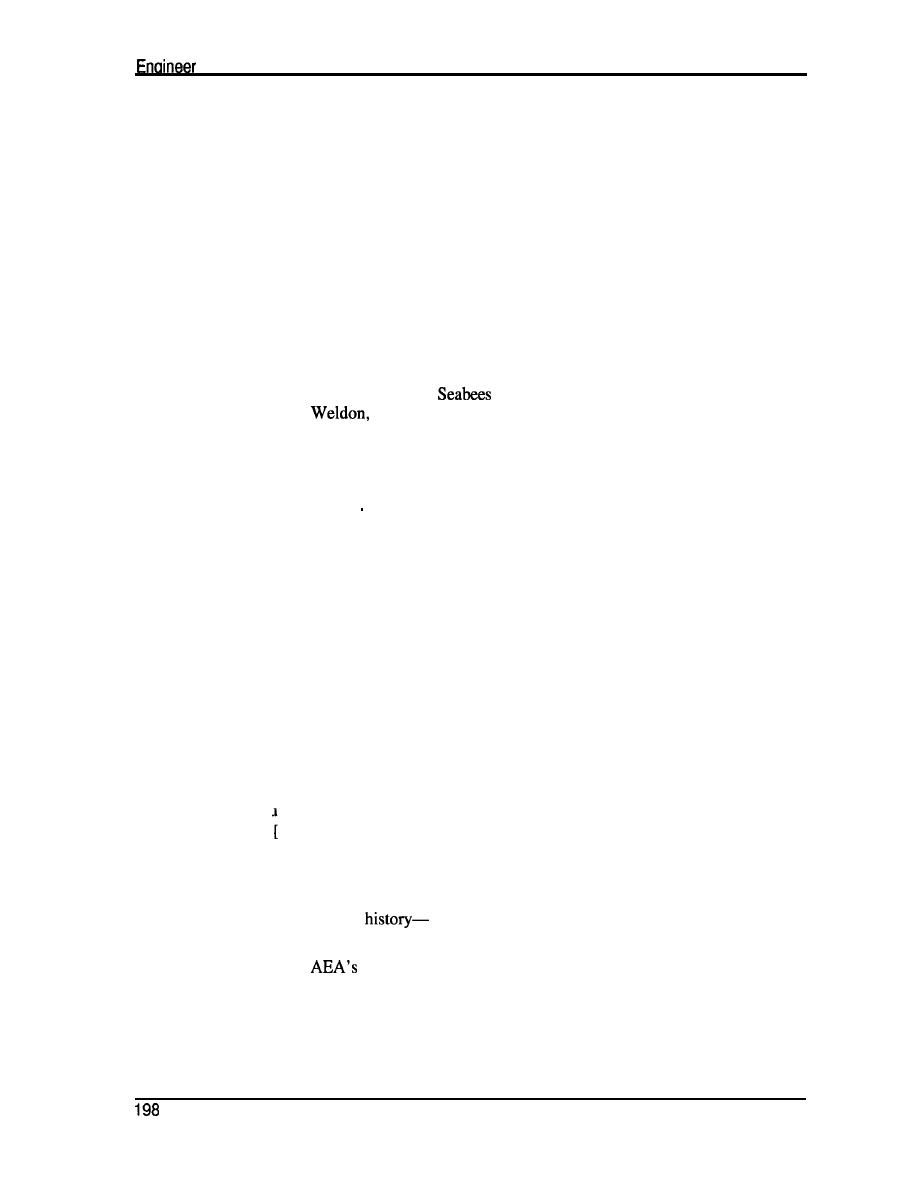
Memoirs
that. We had a museum out at Fort Belvoir, on the military, which was fine, but we had
nothing to service the public works or engineer command side.
I was fortunate and honored to be selected as the Straub Lecturer for the U.S. Steel
Association in 1976. I gave this lecture. Unexpectedly, I received a check in the mail for
,000 as an honorarium. Well, I couldn't keep the money, of course, but I did get permission
to use it for a charitable, tax-exempt activity.
Manning Seltzer was brought in, and some others, and we started the Corps of Engineers
Historical Foundation. That ,000 was used to finance the first move.
Well, we got off to a bad start in one sense. We had a strong group of people to help us. The
idea was to do the history, to set up some scholarships, and to provide a source of pride and
understanding of the role of the Corps of Engineers in the history of this country. The
foundation was not intended to be a professional organization, or anything like that.
Two initiatives surfaced. One was the statue of the Army engineers somewhere in the
Washington area, like there is for the
and others, and the second one was a museum.
an outstanding sculptor who sculpted the Marine Corps' Iwo Jima
We hired Felix de
memorial. I went to his place up in New England-he showed me a mockup of the monument
he would propose.
Unfortunately, the monument appeared to get the first priority. The museum was supposed to
have gotten first priority because it was much easier to deal with. Putting in a monument was
a big problem.
So we frittered away quite a bit of time and energy on that. General Clarke was chosen to be
the first president of the Historical Foundation. We began to make progress on a museum at
the Humphreys Engineer Center near Fort Belvoir. We raised quite a bit of money from the
industry to build it, but we lost a lot of ground when the decision was made not to put the
Corps headquarters out there. Now everything is tied to the southeast federal facility, and
that's still in abeyance-or in the background, at least.
While all this was going on, the engineer regiment was established at Fort Leonard Wood, and
it dealt directly with the soldiers and had memberships. The Historical Foundation charter did
not permit members, which maybe was not a good plan. In any case we soon found we had
one group dealing with the military and one group dealing with the civil program, and that
wasn't good. General Clarke tried, in 1989, to have them put together. General [Daniel R.]
Schroeder, the first CG at Fort Leonard Wood, was lukewarm to it because he was so new.
Two years later, I went to see Schroeder with General Clarke's blessing, and this time, the CG
agreed to put them together into a new organization which became the Army Engineer
Association AEA]. The Army Engineer Association should be successful. It has a lot going
for it.
People say, "Why do I need the AEA and SAME?" Well, SAME is a professional
organization It deals with engineering. The Army Engineer Association deals with the Corps
the soldiers and the civilians, particularly the civilians,
of Engineers' family and
which we've not been able yet to attract adequately, but that's going to happen.
So that's what the
about. The AEA represents the entire engineering family. The Army
element of SAME is that part of the community which is professional. So it's a subset of the
AEA basically.


 Previous Page
Previous Page
